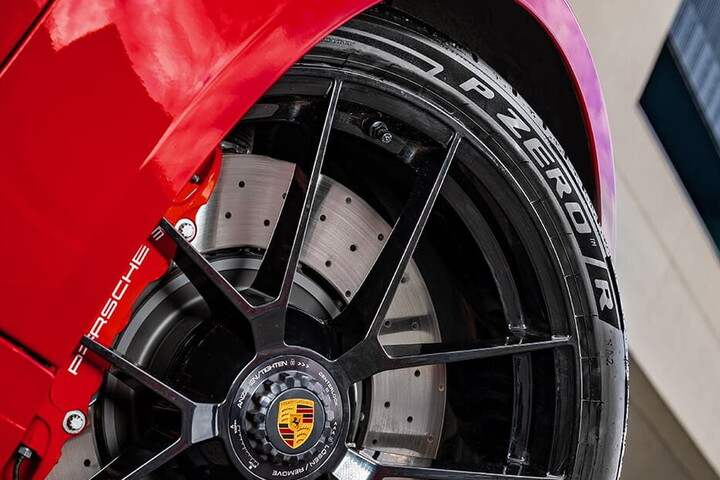There is a fundamental date in Italian automotive history (and beyond): on 12th March 1947, Enzo Ferrari presented the Ferrari 125 S: the first model built by his new Company. That unique sports car specimen for road use– bright red, with a “barchetta” styled body – in fact represents the official birth of Ferrari. Pirelli was there, ready to offer its tyres – already at the cutting edge – to offer top performance and safety for the models produced at the Maranello production lines. Just two years later, the white lettering of the Bicocca Marque appeared on the tyres of the 166 MM, the initials recalling the vocation for the Mille Miglia. Subsequently, in 1950, the 125 F1 marked the start of the Ferrari brand's incredible story in the ultimate car championship, which made its début that year, relying on Pirelli as it had extensive competing experience.

The most precious of all
Alberto Ascari at the wheel of the Ferrari 500 Pirelli Stelvio went on to win two consecutive titles in 1952 and 1953. Indeed, in the early 1950s the Marque from Bicocca accompanied the birth of some road-use Ferraris, from the elegant 375 America and 250 Europa to the 500 Superfast of 1964. And one cannot fail to mention the Ferrari 250 GTO for which Pirelli today makes the Stelvio Corsa, a tyre that has been restyled exclusively to fit the most precious car in the world. The tread pattern and sidewall have been kept entirely similar to those of the tyre from that era, but the vintage charm conceals highly modern technology. Using the most up-to-date and advanced compounds, Pirelli Collection tyres offer a greater grip and improved adherence on wet surfaces, ensuring reliability and the highest levels of safety without losing their original style. Throughout the tyre development process, Pirelli engineers used the same parameters that the vehicle designers employed at the time of design to accommodate the adjustments of the vehicle's original mechanics and suspensions.
F40, the first custom tyres
One of the most important achievements of the partnership between the two Italian companies is the legendary Ferrari F40 in 1987: for the V8 bi-turbo, Pirelli made a tyre specifically designed according to the characteristics of the Maranello sports car for the first time ever, thus marking the start of custom-devised tyres for road use too. But that's not all: it is with this tyre for the F40 that the P Zero brand was born, now fitted on the fastest road-use cars and racing cars, including Formula 1. Then, in 1995, the F355 (Berlinetta, GTS and Spider) was born: thanks to the 18” P Zero tyre with a particular structural rigidity, the 0.98g recorded by the car constituted an exceptional value at the time, but above all it gave the two-seater vehicle impeccable manoeuvrability. This was also the case for the 550 Maranello, designed by Pininfarina, which marked Ferrari's return to front-engine sports saloons segment. To get back in the motorsport “saddle”, the noughties started off with the Road Challenge (2003), a racing version of the 360, with features derived from Formula One.

Iconic inspiration
In the decade that followed, another high-performance car got its own set of tyres: the F12berlinetta, winner of the ADI Compasso d'Oro award in 2014. Pirelli's attention turned to the F12tdf variant, an abbreviation that pays tribute to the Tour de France Automobile, an endurance race in which Ferrari starred during the 1950s and ‘60s, winning several times with its 250 GT line. Another tribute to the past was the highly original Monza SP, inspired by the Fifties models, such as the Monza SP1 and the Monza SP2: the first models in the Icona series, in other words pure exclusivity with strong references to the history of Ferrari. It also marked a new chapter for Pirelli that produced a specific version of the P Zero for both the single- and the two-seater, based on a precise development requirement of the car: to adopt a diameter of 21 inches. Indeed, for the first time in the history of Maranello, this size had been chosen, constituting a challenge for the technicians of the Bicocca: to offer the same levels of rigidity, comfort and performance as Ferrari cars despite the record diameter. Now this challenge has been won, what's next?




